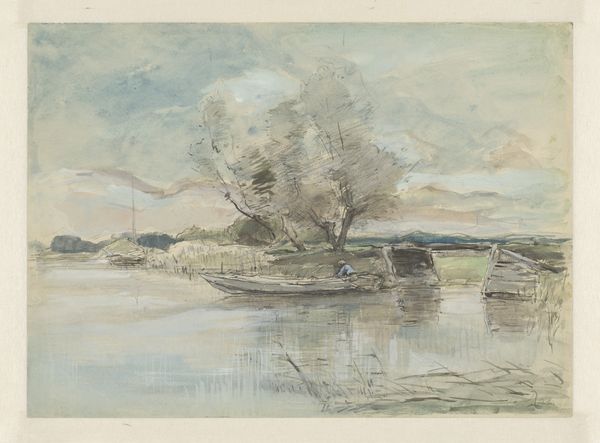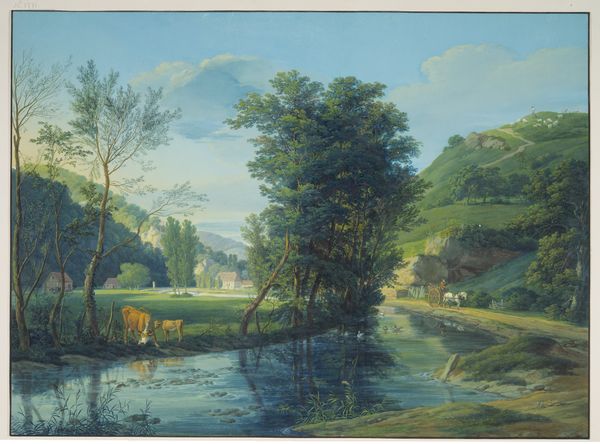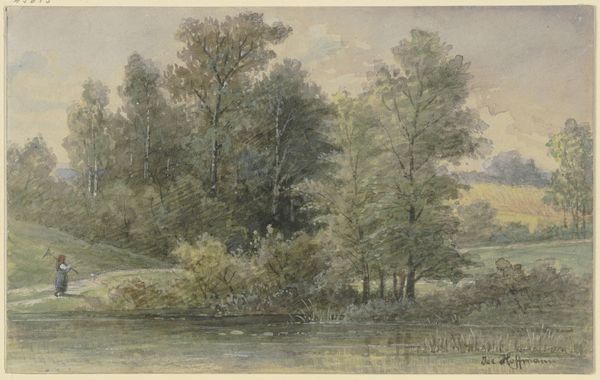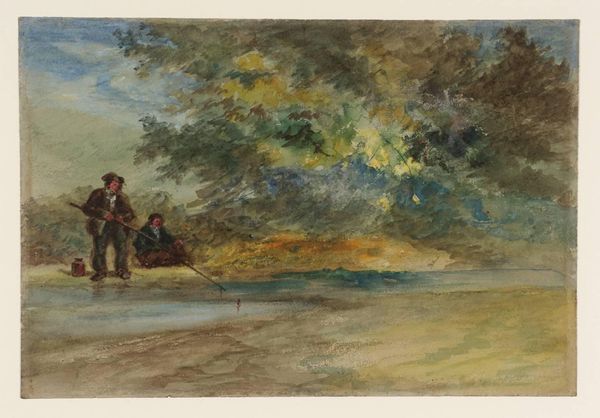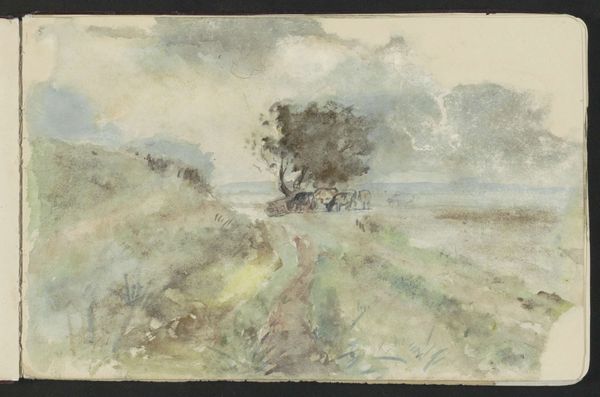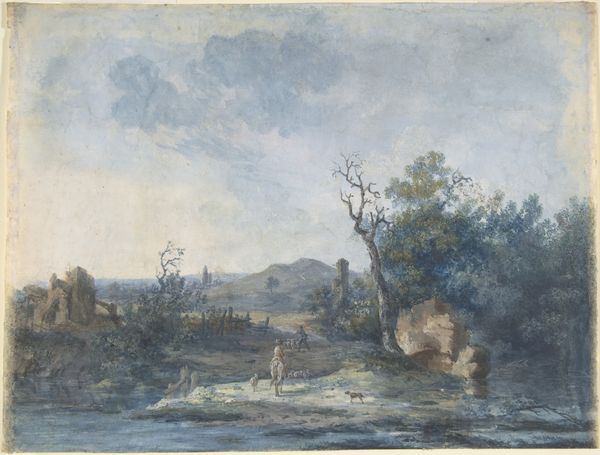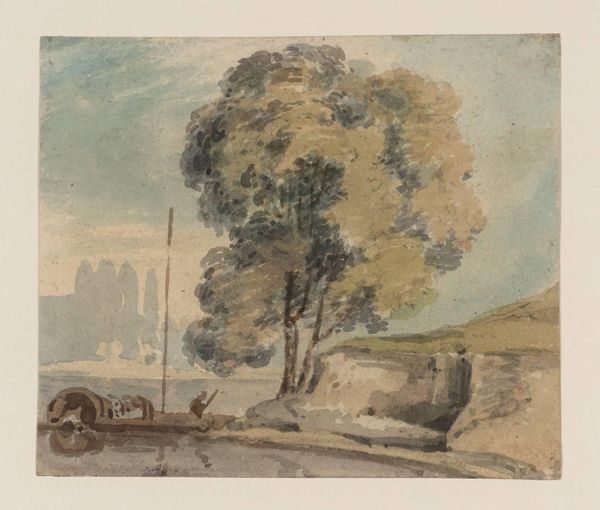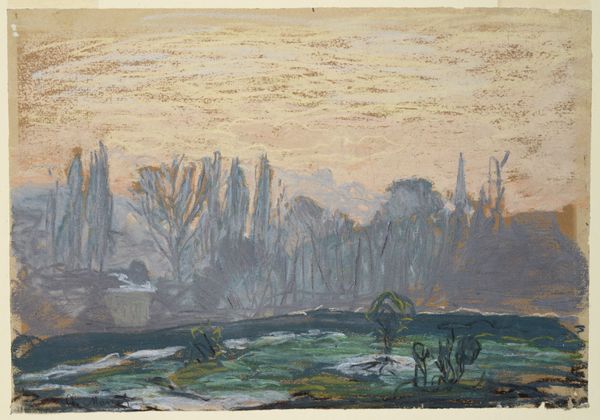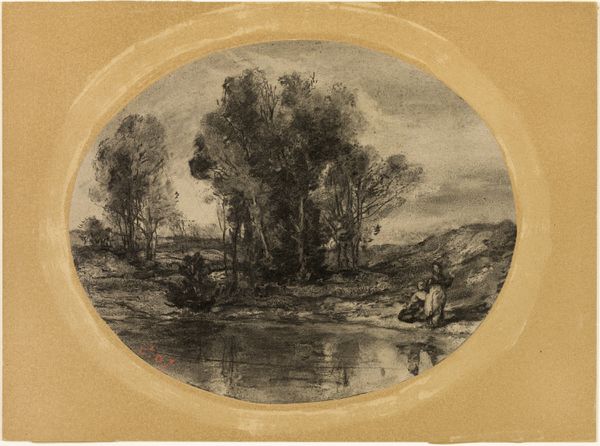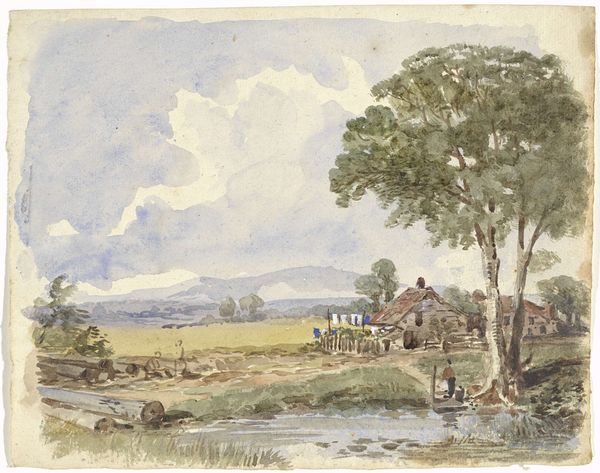
Dimensions: 393 × 483 mm
Copyright: Public Domain
Editor: This is "Scene at Lutworth," created sometime between 1870 and 1880 by J.M.W. Turner. It's a landscape created with watercolor, gouache, graphite, and other drawing and print media on paper. I am struck by the haziness and the sense of light pervading the entire scene, especially given that the human figures seem very small compared to nature. What do you make of this piece? Curator: The diffusion of light indeed commands our attention. Note how the atmospheric perspective diminishes detail in the distant architecture, integrating it into the broader landscape. Observe the gradations in tone, how Turner orchestrates depth through nuanced variations in light and color saturation. Does this atmospheric dominance undermine or reinforce the structural composition of the work? Editor: I see what you mean! It feels less about distinct objects and more about the overall *feel* of the space, the air itself. Are there specific aspects of the composition that contribute to that feeling? Curator: Consider the balance between the verdant foreground and the ethereal background. The implied horizontal lines guide our gaze, while the textured brushstrokes provide a tactile counterpoint to the scene’s visual softness. Does this layering of visual elements create tension, or does it coalesce into a unified artistic vision? Editor: Now that you point it out, there IS a kind of balance between the texture and the atmosphere that really holds the composition together. It’s almost like a stage. Thank you so much for sharing your insights. Curator: And thank you. Delving into Turner's interplay of light, color, and composition allows us to appreciate the structured thought underpinning what may appear as a mere atmospheric study.
Comments
No comments
Be the first to comment and join the conversation on the ultimate creative platform.
